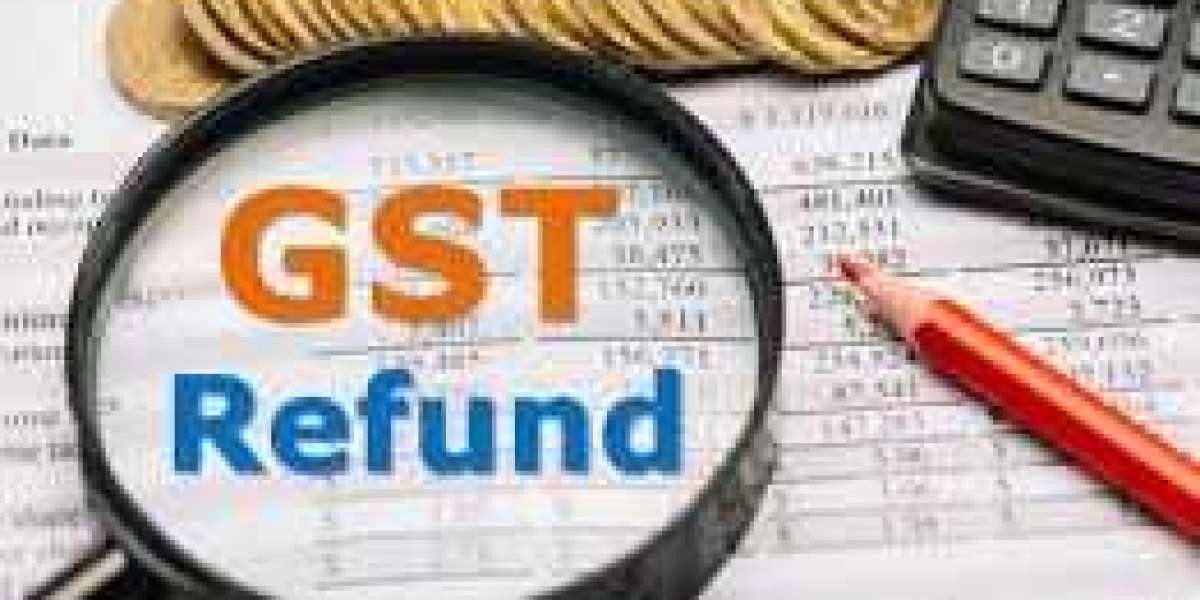The Goods and Services Tax (GST) was introduced in India to streamline indirect taxes and make the taxation system more transparent. However, businesses often find themselves in situations where they pay more GST than is required. This excess amount can be claimed back through a GST refund. Whether it's due to an inverted duty structure, exports, or other eligible reasons, understanding how to apply for a GST refund is crucial for maintaining smooth cash flow and financial efficiency. GST Refund Services play a key role in assisting businesses through this complex process.
In this comprehensive guide, we will walk you through why GST refunds matter, the benefits of claiming them, step-by-step procedures, various types of GST refunds, and answer frequently asked questions.
Why GST Refunds Are Important
The GST refund mechanism is an essential part of the taxation system. It ensures that the tax burden does not rest unfairly on businesses or consumers. If excess GST is not refunded timely, it could lead to blocked working capital and cash flow issues for companies, especially small and medium enterprises.
Here’s why GST refunds are necessary:
- Corrects tax mismatches: Refunds help correct any overpayment due to tax mismatches or excess input tax credits.
- Boosts export competitiveness: Exporters often pay GST on inputs but their output is zero-rated. Refunds make them financially viable.
- Encourages compliance: A robust and fair refund system promotes voluntary compliance.
- Improves liquidity: Timely refunds prevent working capital crunches for businesses.
Advantages of Claiming GST Refund
- Improved Cash Flow: Businesses that claim refunds timely maintain better financial health.
- Reduced Tax Burden: Refunds mitigate the cascading effects of taxes, especially in cases of inverted duty structure.
- Boosts Operational Efficiency: With access to refund amounts, businesses can reinvest in operations or growth initiatives.
- Promotes Fairness: Ensures that businesses are not penalized for systemic or transactional issues.
- Supports Export Businesses: Makes Indian exports more competitive by offsetting the taxes paid on input materials.
Steps to Get a GST Refund
Applying for a GST refund involves a few systematic steps on the GST Portal. Here’s a simplified guide to help you understand the process:
Step 1: Eligibility Check
Before initiating the refund claim, determine if your business is eligible. Common eligibility includes:
- Export of goods/services (with or without payment of tax)
- Accumulation of Input Tax Credit (ITC) under inverted duty structure
- Excess balance in electronic cash ledger
- Refund on deemed exports
Step 2: Login to the GST Portal
Visit the official GST Portal and login using your credentials (GSTIN, username, and password).
Step 3: Navigate to Refund Application
Go to Services Refunds Application for Refund. Select the appropriate refund type from the dropdown list.
Step 4: Fill Form GST RFD-01
Complete the GST RFD-01 form with accurate details:
- Period of refund
- Turnover details
- Input tax credit details
- Bank account information (make sure it is pre-validated)
Step 5: Upload Supporting Documents
Attach relevant documents such as invoices, shipping bills (in case of exports), and Statement 3A for ITC refund under an inverted duty structure.
Step 6: Submit and Acknowledge
Submit the form. You’ll receive an Application Reference Number (ARN) on successful submission.
Step 7: Tracking and Response
Track the status using the ARN on the portal. You may be asked to respond to queries or provide clarifications within 15 days.
Step 8: Refund Sanction Order
If everything is in order, the tax officer will issue a provisional refund (in some cases), followed by the final refund order (RFD-06) and payment.
Types of GST Refund
There are several scenarios under which a GST refund can be claimed. The main types include:
- Refund for Export of Goods or Services
- Export without payment of IGST (under Letter of Undertaking)
- Export with payment of IGST (refund of tax paid)
- Refund for Inverted Duty Structure
- When the rate of GST on inputs is higher than the rate on outputs, leading to unutilized ITC.
- Excess Balance in Electronic Cash Ledger
- Due to advance tax payments or errors in tax calculation.
- Refund on Account of Assessment or Provisional Assessment
- When tax is paid provisionally and the final liability is less.
- Refund for Supplies to SEZ Units or Developers
- Supplies made to SEZs are zero-rated and hence eligible for refund.
- Deemed Exports Refund
- Supplies notified as deemed exports where the recipient is not required to pay GST.
- Refund on Account of Cancellation of Registration
- If there is any balance left in the cash ledger after cancellation.
- Refund Arising Due to Court Orders or Judgments
- When any higher authority or court rules in favor of the taxpayer.
Conclusion
The GST refund process, while procedural, is not overly complicated when approached correctly. By leveraging professional GST Refund Services, businesses can avoid common errors, minimize delays, and receive refunds more efficiently. Timely refunds not only improve a company’s working capital but also contribute to building trust in the tax administration system.
The government has been consistently working to make GST compliance smoother through regular updates on the GST portal and automation. However, to get the most out of your refunds, it's crucial to stay updated with the latest guidelines, maintain clear records, and act promptly when eligible.
FAQs
Q1. What is the timeline for claiming a GST refund?
A: You must file the refund claim within two years from the relevant date, depending on the type of refund.
Q2. How long does it take to receive a GST refund?
A: In most cases, the refund is processed within 60 days. Provisional refunds for exporters may be granted within 7 days.
Q3. Can I revise a refund application once submitted?
A: No, once submitted, you cannot revise the refund application. However, if there are errors, the officer may issue a deficiency memo allowing resubmission.
Q4. What happens if my refund application is rejected?
A: You can rectify the deficiency as per the notice or file an appeal with the appellate authority.
Q5. Is it mandatory to hire a professional for GST refund services?
A: Not mandatory, but highly recommended. Professionals ensure compliance, reduce rejection risk, and handle technicalities smoothly.
Q6. Can I claim a refund if my GST registration is canceled?
A: Yes, you can claim a refund of any balance in your electronic cash ledger after cancellation.
Q7. Is GST refund taxable?
A: No, GST refund itself is not treated as taxable income since it’s a return of excess tax paid.
Q8. Can I claim GST refunds monthly?
A: Yes, businesses can file refund claims on a monthly or quarterly basis depending on their filing frequency and nature of the claim.



